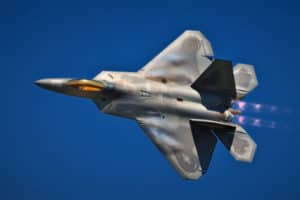Oh, the post-graduation conundrum—so many paths but which runway to choose? As the captain of your destiny, it’s time to chart a flight plan for success in the limitless skies of aviation.
In this blog post, we’ll navigate through the opportunities waiting for you in the aviation sector, ensuring a smooth takeoff into your career after graduation.
Quick Takeaways:
- Pursue specialized aviation education and certifications, like a Part 147 A&P mechanic program or pilot’s licenses, for technical careers in flying and aircraft maintenance.
- Tap into internships and networking opportunities in the aviation field to gain practical experience and connect with industry professionals while still in school.
- Explore diverse career paths in aviation management, air traffic control, and ground support to find the role that best suits your skills and interests.
What Opportunities Await in Aviation After Graduation?
The sky’s the limit when it comes to opportunities in the aviation industry after graduation. If you’ve got your head in the clouds dreaming of a career that takes you to new heights, aviation offers a runway of possibilities.
Pilots are the rockstars of the sky, but the journey to the captain’s seat is an adventure in itself. Meanwhile, air traffic controllers act as the maestros of the airspace, ensuring safety and efficiency.
For the tech-savvy, aircraft engineers play a crucial role in the nuts and bolts of aviation, keeping planes in tip-top shape. In the world of aviation management, strategic minds can soar in roles like airport operations manager or airline executive. And don’t forget those vital support roles, from ground services to cabin crew, each as critical as the next in the seamless operation of air travel.
To really make a mark, consider exploring less traditional paths as well. How about becoming an aviation consultant helping airlines optimize operations, or a drone operator in an industry that’s really taking off? Whatever your destination, one thing’s for sure: a career in aviation promises a high-flying future.
How Can You Get Your Wings in the Cockpit?
If you’re set on becoming a pilot, the journey to earning your wings is both rigorous and rewarding. Let’s break down the flight plan:
-
Education: Start with an aviation degree or flight school training. Schools like the Embry-Riddle Aeronautical University, known for their comprehensive programs, can fast-track your dream to become a pilot.
-
Pilot’s License: Next, you’ll need a Private Pilot License (PPL), followed by an Instrument Rating (IR), and then a Commercial Pilot License (CPL). Each step involves exams and practical flight experience.
-
Flight Hours: Clocking up those flight hours is like gold in your co-pilot’s logbook. It’s about building up to the 1,500 hours required for an Airline Transport Pilot (ATP) certificate.
-
Physical & Mental Preparedness: Flying isn’t just about skill, it’s about being in tip-top condition, both physically and mentally. Regular medical exams are par for the course for aspiring pilots.
Remember, safety is paramount, and there are no shortcuts to the cockpit. Every second of flight experience shapes you into a pilot who’s cool under pressure, navigating through clear skies and rough weather alike.
Is Air Traffic Control Your Call?
Visualize guiding a web of aircraft across the skies, packed with hundreds of passengers. That’s the everyday life of an air traffic controller (ATC). Precision, patience, and nerves of steel are the hallmarks of this high-octane job.
To join this elite squad, here’s what it takes:
-
Specialized Training: You’ll need specific courses from facilities like the FAA Academy. Training programs combine classroom learning with simulations of high-stakes air traffic scenarios.
-
Certification: Passing the Air Traffic Standardized Aptitude Test (ATSAT) is your next step, followed by on-the-job training at an air traffic control facility.
-
Personal Attributes: Crack decision-making, stellar communication, and an unrivaled ability to concentrate are non-negotiable traits for ATCs.
One often overlooked aspect that makes a top-notch air traffic controller is resilience. Handling the pressure cooker environment of a control tower without getting steamed is what separates the good from the great. And if you’re captivated by the thought of being the unsung hero that keeps pilots and passengers safe, it might just be your perfect calling.
As we continue to explore the fascinating world of aviation careers, keep your aspirations sky-high and remember, the journey is just as thrilling as the destination.
Can You See Yourself in Aircraft Maintenance or Engineering?
If you have a knack for mechanics and an eye for detail, aviation offers a challenging and rewarding path in aircraft maintenance or aeronautical engineering. These vital cogs in the aviation machine are less about the glamor of the skies and more about ensuring every passenger lands safely with their feet firmly on the ground—thanks to your expertise.
Aircraft Maintenance Technicians are the unsung heroes who inspect, maintain, and repair the birds of the skies. To embark on this career, you’ll likely need to earn a degree from a Part 147 FAA-approved Aviation Maintenance Technician School followed by obtaining your Airframe and Powerplant (A&P) certification. Precision and thoroughness are not just desired; they are required. Every bolt turned and wire checked could be the difference between a safe flight and a preventable mishap.
Switching gears to the design and development of aircraft, Aeronautical Engineers blend science and mathematics to innovate within the aviation industry. A degree in aeronautical or aerospace engineering is typically the launchpad for this career. Once educated, certification can vary depending on your specialization, though a PE (Professional Engineer) license might be on your horizon. Your work ensures that the aircraft not only stay airborne but do so efficiently and safely.
In both fields, your dedication to safety protocols and attention to detail is non-negotiable. Lives depend on it.
What If You Want to Keep Your Feet on the Ground?
Aviation isn’t all about the wild blue yonder; there’s plenty of groundwork that ensures the industry runs like a well-oiled machine. If you’re more inclined to stay terra firma, consider exploring roles in management, customer service, ground support, or logistics.
- Airport Management roles necessitate a blend of leadership skills and knowledge of airport operations to ensure everything from baggage handling to regulatory compliance is shipshape.
- Consider Customer Service if you’ve got a flair for communication and problem-solving. You’d be at the frontline, ensuring passenger experiences soar high.
- For those who like to be where the action is, Ground Support roles are indispensable. Whether it’s marshaling planes or servicing aircraft, your part in the operational ballet is critical.
- Logistics specialists ensure that the intricate puzzle of aircraft, baggage, and cargo movements fits together seamlessly.
Each of these roles embodies the adage: “For want of a nail, the kingdom was lost.” The smooth running of every aspect of aviation is essential and, often, it’s the behind-the-scenes professionals who are the real MVPs.
How Do You Prepare for an Aviation Career While Still in School?
Now, you’re probably buzzing with excitement about an aviation career, wondering how to stoke those engines while you’re still studying. Here’s how to add some jet fuel to your preparation:
- Internships: Nothing beats real-world experience. Seek out internships in aviation companies or at airports. It’s a golden opportunity to apply your classroom knowledge and make invaluable industry connections.
- Networking: Start building your runway now. Connect with professionals in the field through LinkedIn, attend industry conferences, or join aviation forums. It’s not just what you know, but also who you know.
- Aviation Clubs: Many schools have clubs for like-minded aviation enthusiasts. Joining one can give you a community to learn with and from, plus you can gain leadership experience by taking on club responsibilities.
- Part-time Jobs: If there’s an airport nearby, a part-time position—even if it’s not directly related to your dream job—can give you a taste of the fast-paced world of aviation and put you on the radar of key industry players.
Remember, the sky’s the limit, but you need to build a sturdy runway before takeoff. So, while internships and networking are common pieces of advice, here’s a unique tip: create a personal project related to aviation, like a blog or a model aircraft build. This shows initiative and passion, two attributes that are magnetic to future employers.
Note to content uploader: Links for “Part 147 FAA-approved Aviation Maintenance Technician School” and “Professional Engineer (PE) license” could be directed to respective authoritative pages on the FAA and NCEES websites to ensure readers have direct access to the most relevant and current information.





